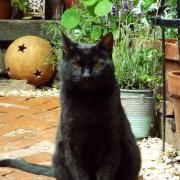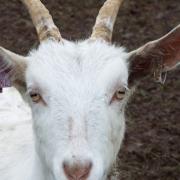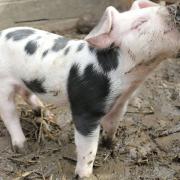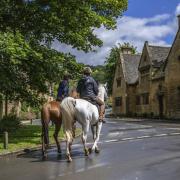The pony I cared for in my boyhood could never be described as a pet. But I took its health and welfare as seriously as today’s breeders
Everyone can tell that I love rare breeds of British livestock. From the Cotswold sheep and Large Black pigs to Gloucester cattle and Bagot goats. But there’s one breed that is particularly close to my heart. It’s a hardy, independent, stocky creature which has been special to me since I was a boy. The high, heather-clad moorland on the coast of west Somerset and north Devon is home to the Exmoor pony. There are very few primitive breeds remaining in the British Isles, but the Exmoor can claim to be Britain’s oldest breed of pony. They have been on the moorland since the time of our ancient ancestors but their exact heritage is a bit of a mystery. Some experts insist they are indigenous to Britain while others are certain that the Exmoor’s wild ancestors came here from Europe around 130,000 years ago. What we do know for certain is that the Celts tamed them and trained them to pull chariots, and legend has it that the great Warrior Queen, Boadicea, waged war on the Romans thanks to pony power. Amongst their distinguishing features are a mealy (or oatmeal-coloured) muzzle and a hooded ‘toad’ eye which helps shield them from the worst of the West Country weather.
So why do I adore Exmoors so much? Well it goes back to an ingenious scheme that my dad dreamt up to ensure that my sisters and I inherited his passion for livestock and at the same time had a handle on the need to save. While our friends at school would be given traditional pets such as cats, hamsters or goldfish, the Henson brood were handed the responsibility of looking after our own, individual farm animals. We quickly learnt about rearing livestock and when they came to be sold, we were allowed to put half the profit in to our own savings and the other half was invested in the flock or herd. I was lucky enough to be trusted with an Exmoor pony and I was hooked immediately.
The story of our rare and native breeds is a tale that is full of ups and downs. Over the last couple of hundred years some breeds have come in and out of popularity while others have fallen from favour. Some even died out completely, such as Suffolk Dun cattle, Limestone Sheep and the Lincolnshire curly coat pig. In fact between 1900 and 1973 (when the Rare Breeds Survival Trust was created), we lost 26 native breeds in the British Isles. Thanks to the brilliant work of the RBST, there hasn’t been a single extinction in the last 42 years. At the moment it seems as if there’s a renewed interest in the Exmoor. In the last few years an annual Exmoor Pony Festival has been held with a series of events including a grazing day, sponsored rides, walks and a breed show with foals, mares, stallions and young stock in the ring. The idea behind the Festival is to publicise and promote the twenty or so registered herds of Exmoors which live in their native landscape. It’s a very different picture from the situation seventy years ago when the breed faced being wiped out. In the 1940s many owners went off to war and some ponies were neglected while others were shot or stolen to provide meat to supplement rations. It left just 50 ponies left on Exmoor. But breeders rallied round, cattle grids were restored and gradually numbers increased. Today there are about 500 ponies on the moorland and another 3,500 around the world. The pony I cared for in my boyhood could never be described as a pet. It was more of a pet-project. But I took its health and welfare every bit as seriously as today’s breeders and the hard-working folk behind the Exmoor Pony Festival.
This article was taken from the Pets Issue of Cotswold Life, November 2015

























